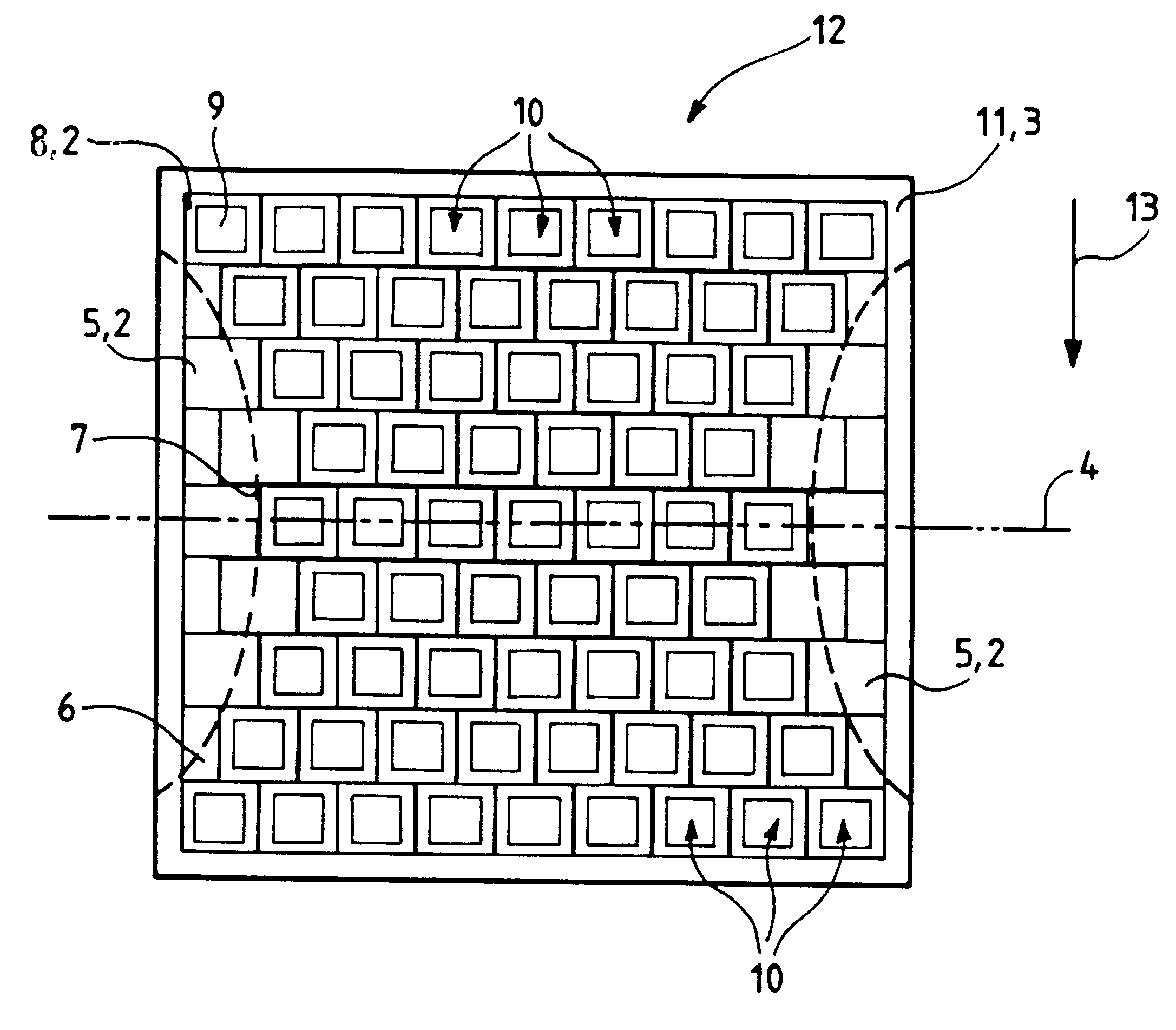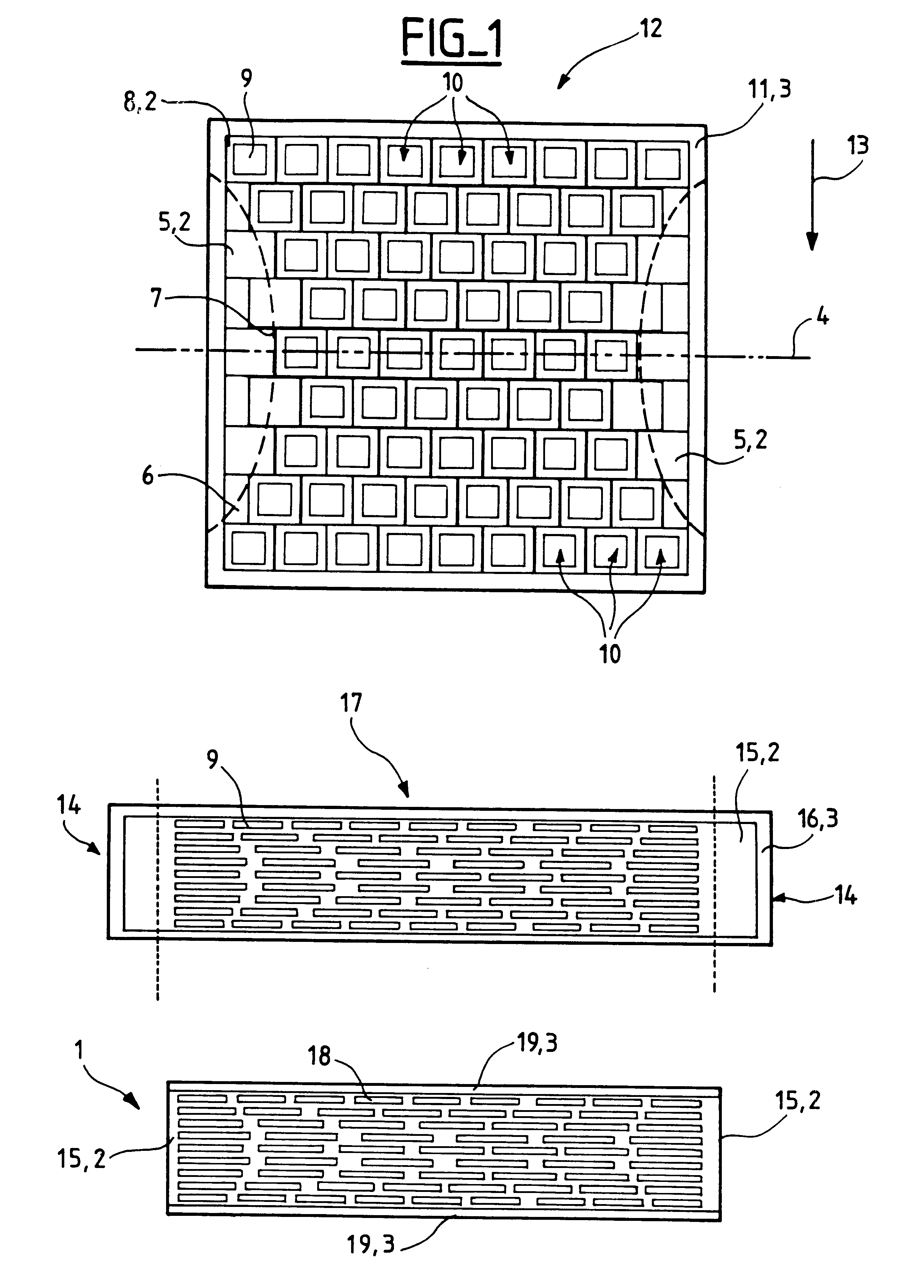Method of making superconductor strand
a multi-filament, superconductor technology, applied in the direction of superconducting magnets/coils, permanent superconductor devices, magnetic bodies, etc., can solve the problems of poor mechanical performance, insufficient oxygen permeation of silver alloys which are required for maintaining the mechanical performance of the strand, and fragile strands, etc., to achieve good mechanical strength, reduce the dispersion of monofilaments, and high density and uniformity
- Summary
- Abstract
- Description
- Claims
- Application Information
AI Technical Summary
Benefits of technology
Problems solved by technology
Method used
Image
Examples
Embodiment Construction
The present invention relates to a powder-in-tube method of manufacture for manufacturing an HTc superconductor multifilament conductor 1 having a matrix 15 of compatible silver alloy 2.
The steps of the method are as follows:
A square or rectangular section monofilament is made having a sheath 8 of compatible silver 2 and a core of HTc superconductor precursors 9. The monofilament is made from a billet comprising a compatible silver alloy case filled with precursors. The billet is then treated mechanically by wire-drawing and rolling so as to obtain the monofilament.
The monofilament is cut into segments and a square or rectangular case 11 of non-compatible silver alloy 3 is filled with the monofilament segments 10.
The segments 10 are laid in superposed layers centered within the case 11 of non-compatible silver alloy 3, each layer being offset relative to the preceding layer as to form a configuration of the segments 10 that is staggered in a direction 13 perpendicular to the plane 4...
PUM
 Login to View More
Login to View More Abstract
Description
Claims
Application Information
 Login to View More
Login to View More - Generate Ideas
- Intellectual Property
- Life Sciences
- Materials
- Tech Scout
- Unparalleled Data Quality
- Higher Quality Content
- 60% Fewer Hallucinations
Browse by: Latest US Patents, China's latest patents, Technical Efficacy Thesaurus, Application Domain, Technology Topic, Popular Technical Reports.
© 2025 PatSnap. All rights reserved.Legal|Privacy policy|Modern Slavery Act Transparency Statement|Sitemap|About US| Contact US: help@patsnap.com



